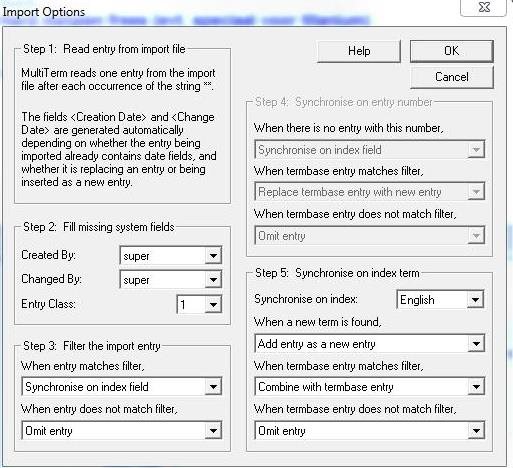In importing my MT 5.1 files into new MT Studio databases somehow quite a number of entries were duplicated. Sometimes they even appear 12 times in my database. Since my MT database is rather extensive, trying to fix this manually would take days.
In MT 5.1 it was very simple: just synchronize on index field, and double entries were combined.
Why doesn't this work in MT 2014?
RWS Community

 Translate
Translate

